.
5.01.2015





Quelle: SpaceX
-
Update: 21.15 MEZ
Weather Improves to 70 Percent 'Go' for Dragon
Today, NASA’s Kennedy Space Center in Florida hosts three news conferences related to Tuesday’s launch of SpaceX CRS-5, the fifth SpaceX cargo resupply mission to the International Space Station. The briefings will be held at Kennedy’s Press Site and will air live on NASA Television and the agency’s website. Launch weather has improved to 70 percent “go.”

Quelle: NASA
.
Update: 6.01.2015
.

Falcon 9 and Dragon have gone vertical in advance of tomorrow's 6:20am ET launch.

Drone spaceport ship heads to its hold position in the Atlantic to prepare for a rocket landing

Quelle: SpaceX
...Update; 11.15 MEZ
Weather Update
At T-1 hour 20 minutes, weather has improved to 90% "go".
...
...Update: 11.30 MEZ / LIVE


...Update: 12.00 MEZ
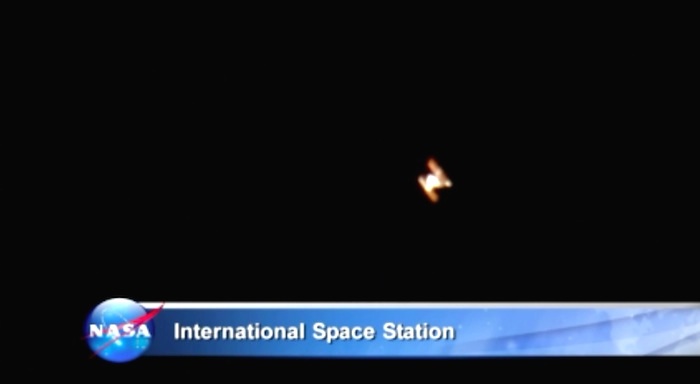

...Update: 12.30 MEZ

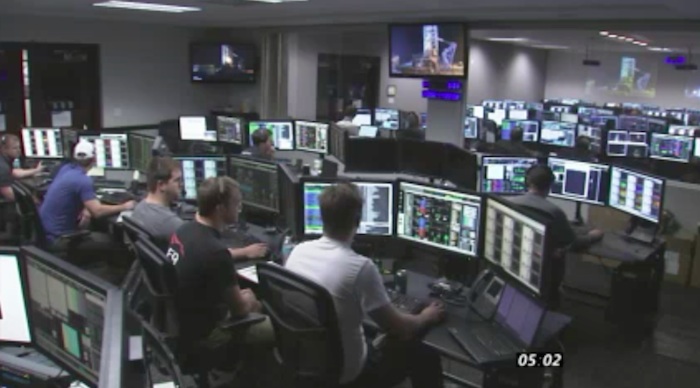

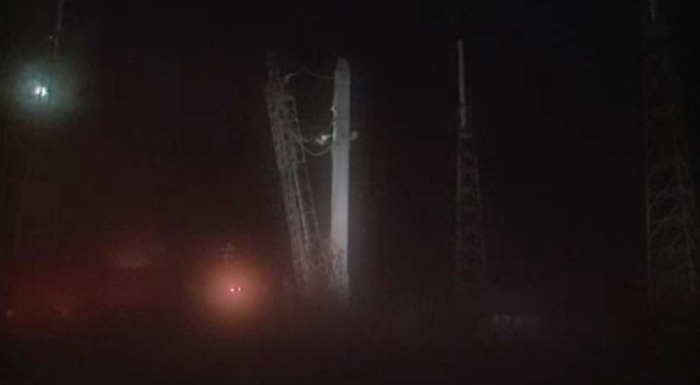

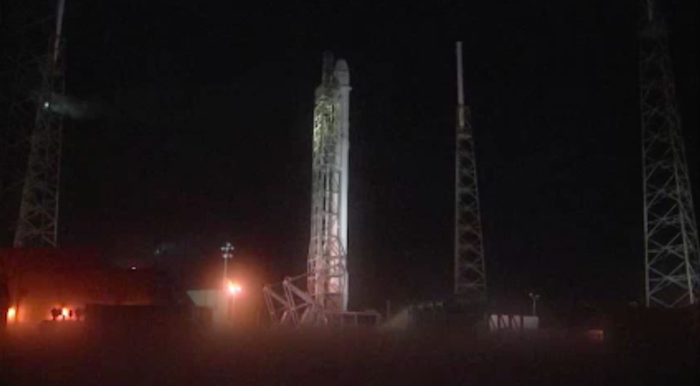
Start-Abbruch...
Launch Update
During the terminal count engineers observed drift on one of the two thrust vector actuators on the second stage that would likely have caused an automatic abort. Engineers called a hold in order to take a closer look. SpaceX is scrubbed for today and we are now targeting launch on Jan. 9th at 5:09am ET.
Quelle: SpaceX
...Update: 15.00 MEZ
SpaceX Resets For Next Falcon 9 Launch Attempt On Jan 9
Space Exploration Technologies (SpaceX) has slipped the launch of its fifth commercial resupply services mission to the international space station to Jan. 9 at the earliest following an issue with a thrust vector control actuator which stopped the countdown seconds before liftoff on Jan. 6 from Launch Complex 40 at Cape Canaveral Air Force Station.
The flight, which was already delayed from Dec. 18 after issues from a static firing two days before, will include the much-anticipated first attempt by SpaceX to make a precision landing of a Falcon 9 first stage on a custom-built ocean platform known as the autonomous spaceport drone ship.
NASA comments that “at 1:21 before launch, a thrust vector control actuator for the Falcon 9’s second stage failed to perform as expected. SpaceX is evaluating.” During commentary immediately after the countdown stopped launch controllers referred to issues with actuator ‘drift’.
Assuming SpaceX can correct the problem in time the next launch attempt will take place at 0509 Eastern on Jan. 9. The company meanwhile continues to manage expectations ahead of the landing attempt, saying it has a 50% chance “at best” of successfully recovering the first stage onto the floating platform. SpaceX meanwhile says lessons learned will enable it to land and re-launch a used first stage by the end of 2015.
Quelle: Aviation Week
---
Update: 7.01.2014
.
Problem in 2nd stage halts SpaceX launch
A problem with a steering mechanism on the Falcon 9 rocket’s second stage halted SpaceX’s attempted launch early Tuesday from Florida of a Dragon cargo ship to the International Space Station.
If the fault can be repaired in time, the next launch attempt is set for 4:09 a.m. CST Friday.
Whenever launch occurs, the rocket’s first stage is set to attempt a first-ever landing on an offshore platform minutes after launch, using techniques pioneered at the company’s McGregor test site.
The demonstration is hoped to eventually lead to money-saving reuse of rockets that normally are destroyed on re-entry.
The first public hint of trouble Tuesday came less than three minutes before the scheduled 5:20 a.m. CST launch from Cape Canaveral Air Force Station.
A normally routine call on the countdown net — “LD, verify go for launch” — was met with a request by the launch director to stand by, rather than his customary “go.”
Then, with a minute and a half left in the countdown, came the launch director’s word: “Hold, hold, hold.” Since the Dragon must be launched when the station’s orbit is directly over the launch pad — a so-called “instantaneous launch window” — that meant the launch was scrubbed for Tuesday.
The problem was with one of two devices in the second stage called thrust vector control actuators — mechanisms that move the stage’s single Merlin 1D Vacuum engine in order to steer it.
SpaceX CEO Elon Musk said in a tweet after the scrub that the actuator “was behaving strangely.” Descriptions of the problem as “actuator drift” by SpaceX and NASA during NASA’s launch coverage suggested that the actuator was moving when it wasn’t supposed to.
The Dragon carries some 5,000 pounds of cargo bound for the station, much of it meant to replace items that were aboard an Orbital Sciences Cygnus capsule destroyed when its Antares launcher failed during liftoff Oct. 28 at Wallops Island, Virginia.
NASA officials said the ISS is well stocked with essentials, but that doesn’t mean the reduction in cargo runs to the station hasn’t brought irritations.
Space station commander Butch Wilmore told the Associated Press on Tuesday after the Dragon’s scrub that the six crew members ran out of condiments a month ago, and he’s yearning for some yellow mustard to spice up the food. He and his crewmates were watching the launch countdown just before sunrise live via a video feed from Mission Control in Houston.
“Certainly, there’s a little bit of disappointment because it had fresh fruit and those types of things that we’re all interested in getting,” Wilmore said. “But they’ll get off the ground here in a couple of days and it will all be great.”
With Antares’ failure blamed on aging Russian engines now deemed unreliable, Cygnus’ scheduled cargo flights to the station have been suspended while Orbital officials prepare modifications to launch the ship instead using United Launch Alliance’s Atlas V rocket.
Quelle: Waco Tribune
.
Update: 8.01.2014
.
SpaceX to try early Saturday launch of ISS cargo
SpaceX will try again early Saturday to launch an International Space Station resupply mission from Cape Canaveral Air Force Station, NASA has confirmed.
The instantaneous launch window is at 4:47 a.m., when there's an 80 percent chance of favorable weather at Launch Complex 40.
SpaceX had previously been targeting a Friday morning launch, and no reason was given for the change.
Earlier today, NASA said it was likely the company would replace a component responsible for scrubbing the mission's first launch attempt on Tuesday, but no decision had been made.
SpaceX said an actuator in the system that controls steering of a Falcon 9 rocket's upper-stage engine behaved strangely, resulting in the scrub with 1 minute and 21 seconds remaining in Tuesday's countdown to a planned 6:20 a.m. liftoff.
Atop the Falcon 9 is an unmanned Dragon spacecraft packed with more than 5,000 pounds of food, supplies and science experiments bound for the station and its six-person crew orbiting about 250 miles above the planet.
If it launches, the Dragon would be expected to arrive at the outpost around 6 a.m. Monday.
The mission is SpaceX's fifth of 12 planned under a $1.6 billion NASA resupply contract.
After the launch, SpaceX also plans to try to land the Falcon 9 rocket's first stage on an ocean platform, an experiment aimed at advancing development of reusable rockets.
If the mission does not launch Saturday, the next possible attempt would be at 3:36 a.m. next Tuesday.
Quelle: Florida Today
---
NASA, SpaceX Set New Launch Date for Next Resupply Mission to Space Station
The fifth official SpaceX cargo mission to the International Space Station under NASA's Commercial Resupply Services contract now is scheduled to launch at 4:47 a.m. EST Saturday, Jan. 10, from Space Launch Complex 40 at Cape Canaveral Air Force Station in Florida. NASA Television coverage of the launch will begin at 3:30 a.m.
The previous launch attempt on Tuesday was aborted with one minute, 21 seconds left on the countdown clock because engineers observed drift on one of two thrust vector control actuators for the Falcon 9’s second stage and stopped the countdown.
A Saturday launch will result in the Dragon spacecraft arriving at the space station Monday, Jan. 12. Expedition 42 Commander Barry "Butch" Wilmore of NASA will use the station's 57.7-foot robotic arm to capture Dragon at approximately 6 a.m. Flight Engineer Samantha Cristoforetti of the European Space Agency will support Wilmore as they operate from the station's cupola. NASA TV coverage of grapple will begin at 4:30 a.m. Coverage of Dragon's installation to the Earth-facing port of the Harmony module will begin at 8:15 a.m.
If the launch does not take place Saturday, the next launch opportunity would be Tuesday, Jan. 13 at about 3:36 a.m.
Dragon's cargo will support more than 250 experiments that will be conducted by the space station’s Expeditions 42 and 43 crews.
Quelle: NASA
.
Update: 9.01.2015

Quelle: SpaceX
.
Update: 10.01.2014
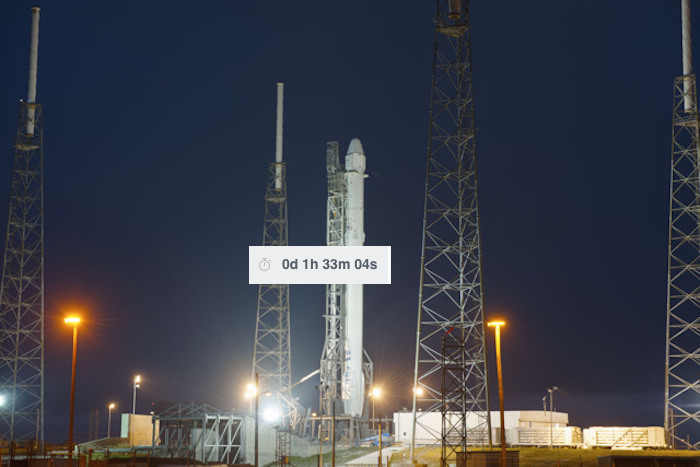
Quelle: SpaceX
...
Update: 10.30 MEZ / LIVE-Frams von CRS-5 Start zur ISS

...


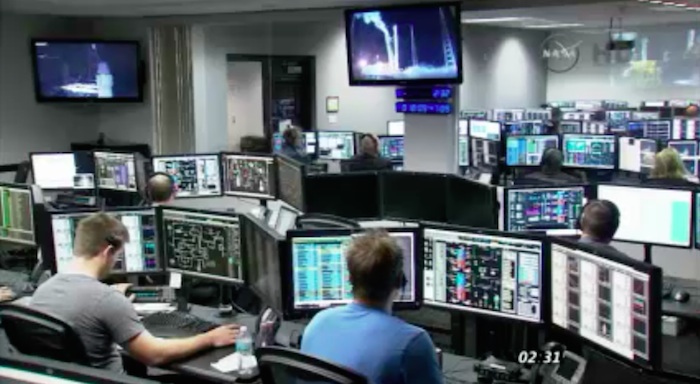
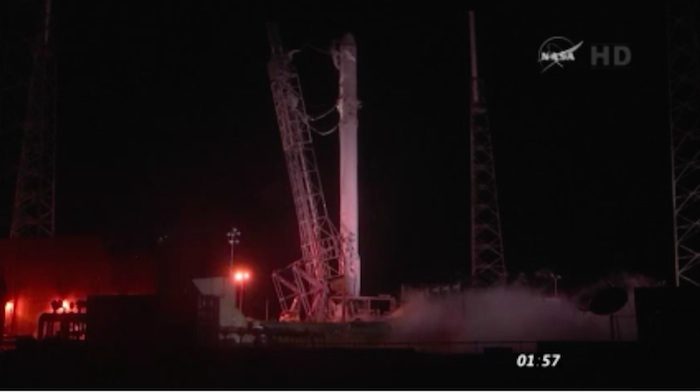
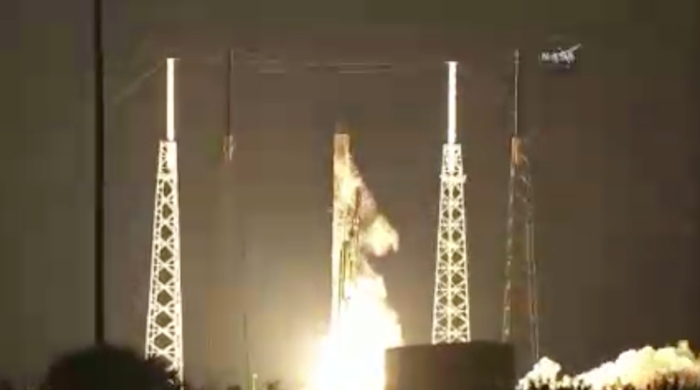
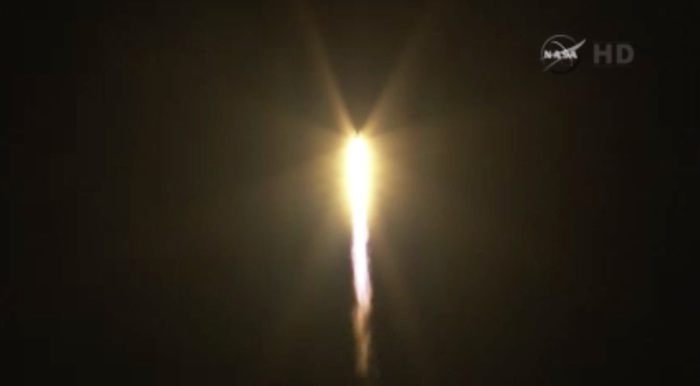

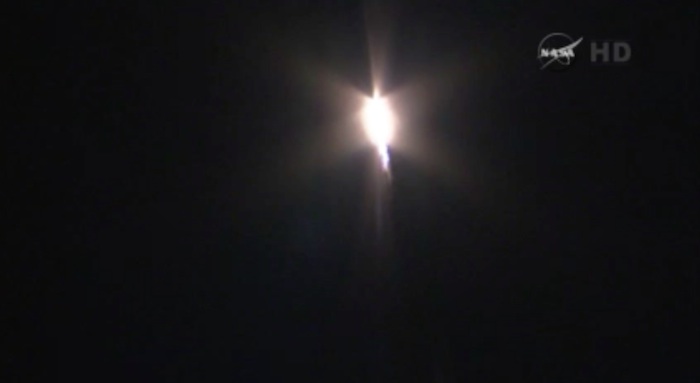




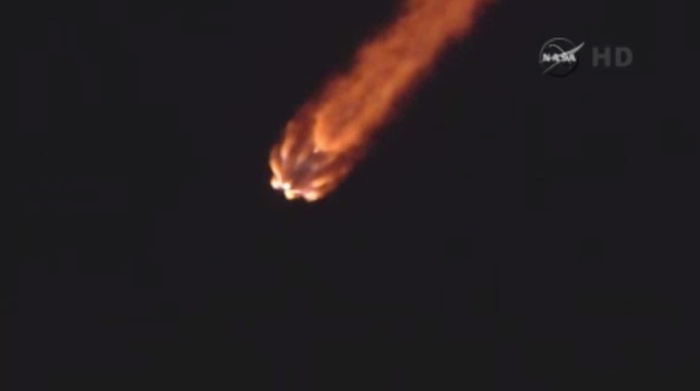




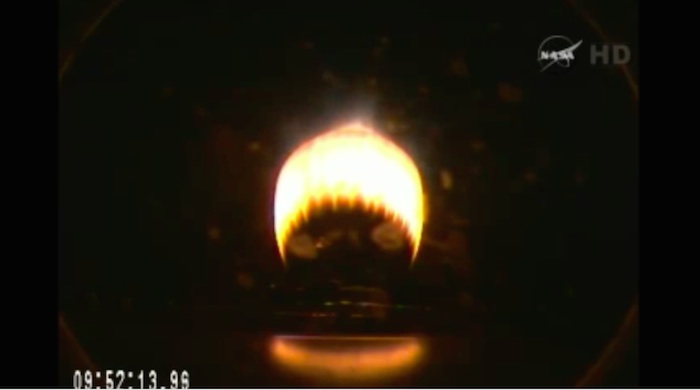
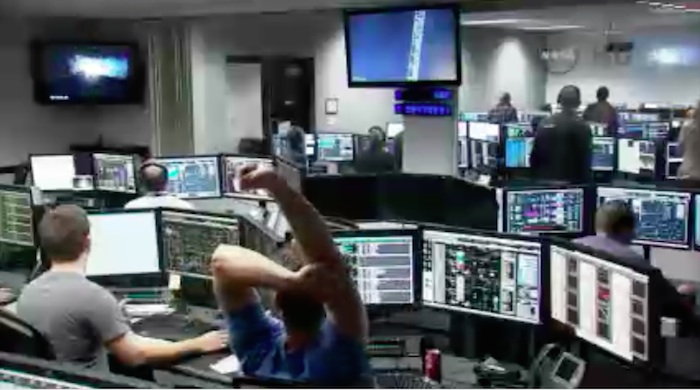




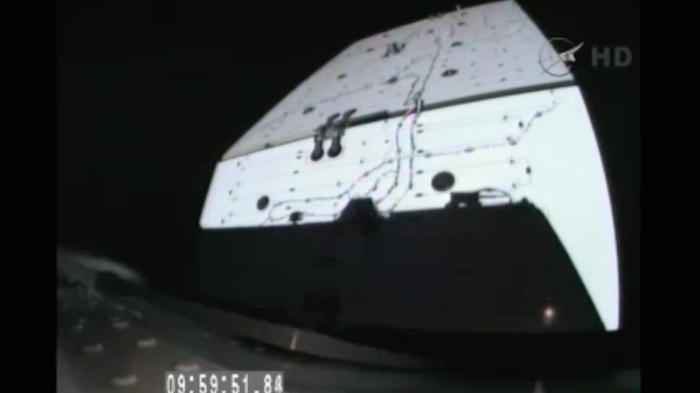

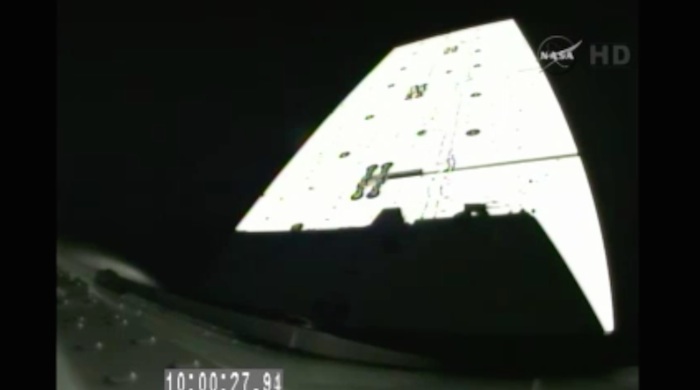
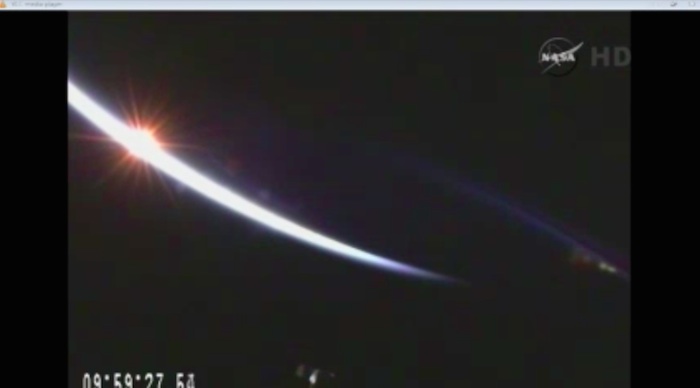

Quelle: NASA-TV
...
Update: 12.00 MEZ
Cape Canaveral – Das US-Raumfahrtunternehmen SpaceX ist am Samstag mit dem Versuch gescheitert, eine Trägerrakete nach dem Start wieder unbeschadet auf der Erde landen zu lassen.
Zwar hob der Versorgungsflug zur ISS mit der unbemannten Raumkapsel „Dragon” wie geplant vom Weltraumbahnhof Cape Canaveral im US-Bundesstaat Florida ab. Doch schaffte es die Rakete Falcon 9 nicht, wie vorgesehen auf einer im Atlantik schwimmenden Plattform aufzusetzen. „Knapp daneben ist auch vorbei”, schrieb SpaceX-Chef Elon Musk auf dem Kurznachrichtendienst Twitter. Der Flug von „Dragon” zur ISS ist Routine, die mit 2,2 Tonnen Fracht beladene Kapsel kann nach wie vor am Montag an der Raumstation andocken.
.
SpaceX rocket crashes in first attempted boat landing
Private spaceflight firm SpaceX launched its fifth cargo mission to the International Space Station today – but its planned test landing of the first stage of its Falcon 9 rocket on a boat was unsuccessful.
Most rockets are built for a single use only, falling into the sea once their fuel is spent. SpaceX CEO Elon Musk has likened this to throwing away your aircraft every time you fly and identified it as a key reason for the high cost of spaceflight.
That's why SpaceX has attempted to land the first stage of its Falcon 9 rocket, with an eye to reusing it. After previous launches the company has fired up its rockets as they return to Earth, deploying a set of landing legs and reducing their speed but ultimately still landing in the ocean. It has also conducted small-scale land-based tests with its Grasshopper rocket.
For this latest flight, SpaceX positioned an autonomous barge off the coast of Florida to attempt the first ever Falcon 9 landing on a solid surface, following the launch at 947 GMT from Cape Canaveral, Florida, sending an unmanned Dragon capsule on its way to the ISS.
On its way down, the rocket successfully hit the barge, but came in too fast and was destroyed. "Close, but no cigar this time," tweeted Musk shortly after the attempted landing, which took place around ten minutes after take-off. Musk also said it was too dark and foggy to get video of the landing, but SpaceX now plans to analyse data from the flight and try again with a future launch.
A successful landing will place SpaceX in a league of its own, as the ability to reuse rockets could drastically lower the cost of getting to orbit, though there are many more tests required before we see a second-hand rocket fly into space.
Competitors are already starting to take notice – earlier this week the French space agency, CNES, announced plans to develop its own reusable rocket tech. And in the long term, the ability to land a rocket on solid ground will assist in Musk's ultimate goal: colonising Mars.
Quelle: NewScientist
.
Update: 21.30 MEZ
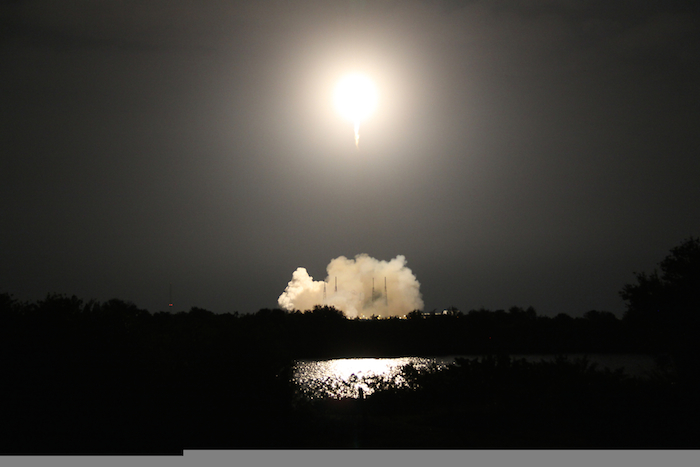
Liftoff of SpaceX Resupply Mission to the International Space Station
SpaceX's Falcon 9 rocket lifts off from Space Launch Complex 40 at Cape Canaveral Air Force Station carrying the Dragon resupply spacecraft to the International Space Station. Liftoff was at 4:47 a.m. EST on Saturday, Jan. 10, 2015. The commercial resupply mission will deliver 3,700 pounds of scientific experiments, technology demonstrations and supplies, including critical materials to support 256 science and research investigations on the space station.
Quelle:NASA
.
Update: 12.01.2015
.
SpaceX’s rocket landing platform back in port

SpaceX’s ocean-going rocket landing pad — dubbed the autonomous spaceport drone ship — is back in port after a Falcon 9 rocket booster crashed on the platform during an experimental flyback maneuver following Saturday’s successful liftoff with supplies for the International Space Station.
Under tow from a tugboat, the 300-foot-long Marmac 300 cargo barge arrived at the Port of Jacksonville in Florida on Sunday afternoon. The images below show it in the St. Johns River near Dames Point Bridge.
The first stage of SpaceX’s Falcon 9 rocket completed a series of maneuvers to fly back to the barge from the edge of space after sending a Dragon supply ship on its way to the International Space Station. The mission lifted off from Cape Canaveral at 4:47 a.m. EST (0947 GMT) Saturday, with landing on the barge targeted less than 10 minutes later.
SpaceX founder and CEO Elon Musk tweeted the first stage booster reached the platform but landed hard, adding later that hydraulic fluid powering the rocket’s four aerodynamic stabilization fins apparently ran out on final descent.
Engineers plan to add more hydraulic fluid to the rocket for an upcoming launch, which will try to perform the recovery experiment again. If SpaceX succeeds, engineers will inspect the rocket to see what work is required to refurbish for another flight. The ultimate goal is to make the Falcon 9 rocket reusable, an achievement SpaceX says would reduce the cost of space launches.
Photos of the barge show signs of blast and burn damage to cargo containers and possible wreckage from the rocket covered by tarps on the platform’s deck. The rest of the vessel appeared undamaged.
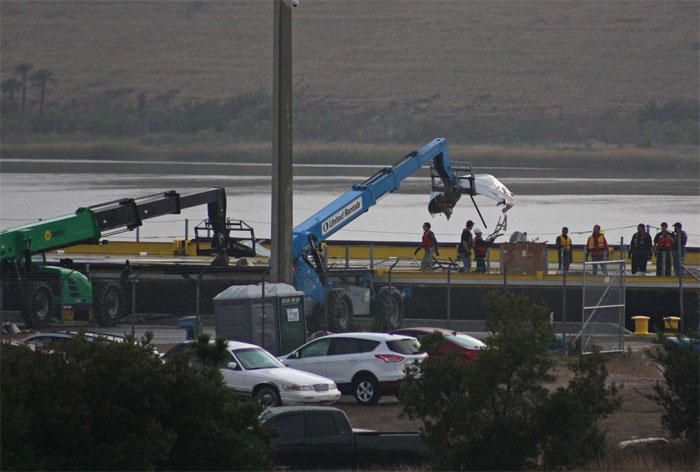
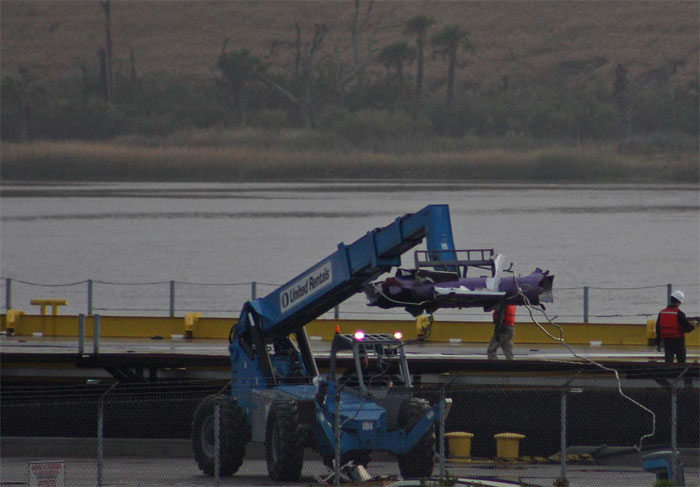
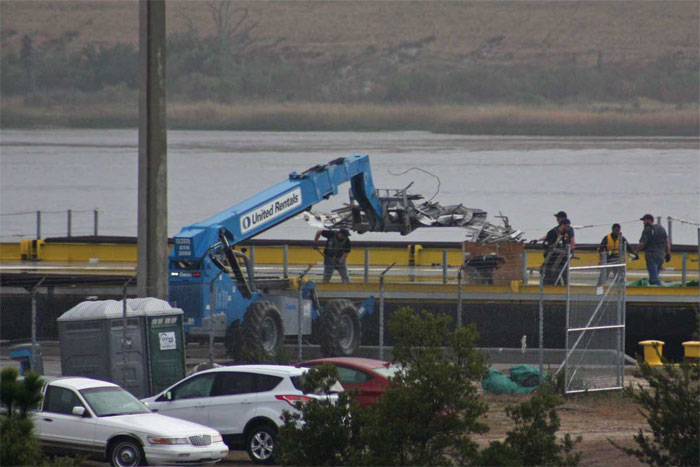
Quelle: SN
.
Update: 17.01.2015
.
Images Show Falcon 9 First Stage Crash-Landing on Ship
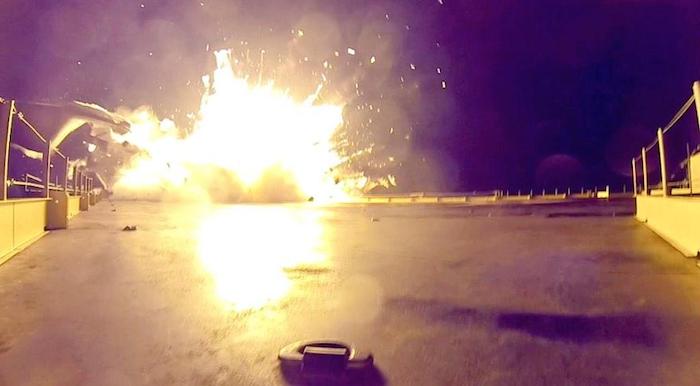
A Falcon 9 first stage explodes on the deck of SpaceX's landing ship during an attempted landing Jan. 10. The image was one of several posted on Twitter by company CEO Elon Musk early Jan. 16. Credit: Elon Musk/Twitter
WASHINGTON — SpaceX chief executive Elon Musk released a series of images Jan. 16 showing a Falcon 9 first stage crash-landing on a ship and exploding after a launch earlier in the month.
In a series of tweets, Musk posted images taken by a camera on the company’s “autonomous spaceport drone ship” Jan. 10 as a Falcon 9 first stage attempted to land there after a launch from Cape Canaveral. The attempted landing was the latest in a series of tests by the company to demonstrate the ability to recover and reuse the first stage.
.

The images show the stage touching down on the deck of the ship, but at an angle of about 45 degrees. Musk said that grid fins mounted at the top of the stage and used for steering had lost power gone “hardover” and the stage’s engines were only partially able to compensate.
.

Rocket hits hard at ~45 deg angle, smashing legs and engine section
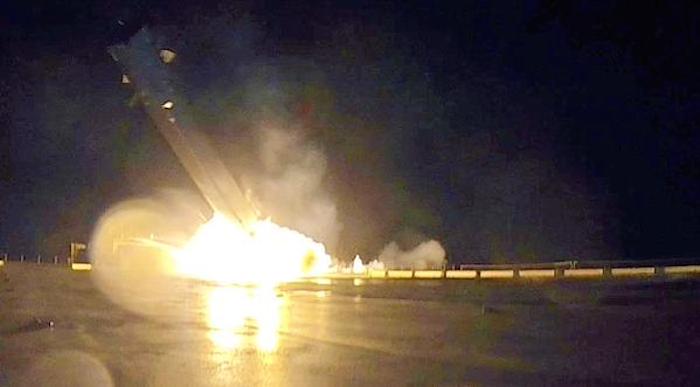
The impact of landing at that angle, he said, smashed the engine section of the stage as well as its landing legs. The stage’s remaining liquid oxygen and kerosene propellants then combined, causing what Musk called a “Full RUD (rapid unscheduled disassembly) event”—that is, an explosion.
.

ull RUD (rapid unscheduled disassembly) event. Ship is fine minor repairs. Exciting day!
.
No Cigar SpaceX released later Jan. 16 a video showing the stage attempting to land on the ship. The brief video showed the stage descending under rocket power at an angle, drifting to one side of the platform before crashing and exploding.
Musk said immediately after the Jan. 10 landing attempt that the grid fins ran out of hydraulic fluid shortly before landing. The next attempt, he said then, would increase the amount of hydraulic fluid available to the fins by 50 percent.
SpaceX spokesman John Taylor confirmed Jan. 15 that the company would make another landing attempt on its next Falcon 9 launch, of the Deep Space Climate Observatory spacecraft. That launch, also from Cape Canaveral, is scheduled for Jan. 29. Despite the fiery explosion, Musk said the ship requires only “minor repairs.”
Musk’s series of images were in response to a tweet by John Carmack, the videogame designer and software developer best known in the space industry as the founder of Armadillo Aerospace. That company experimented on a smaller scale with rockets that takeoff and land vertically before going into what Carmack called “hibernation mode” in 2013.
“Clearly the fins worked great to get that demonstrated accuracy — congratulations!” Carmack tweeted to Musk late Jan. 15.
Carmack offered congratulations again Jan. 16 after Musk posted the landing images. “Bravo,” he tweeted. “I used to caution newbie engineers, smug with [simulations], about the ‘inevitable tragic loss of vehicle’ event in their future.”
Musk’s series of images also prompted a response from United Launch Alliance president and chief executive Tory Bruno. He noted his company has a number of employees who worked on the DC-X, a 1990s-era project to demonstrate vertical takeoff and landing technology for future reusable launch vehicles. “Let me know if we can help,” Bruno wrote.
Quelle: SN
4245 Views
